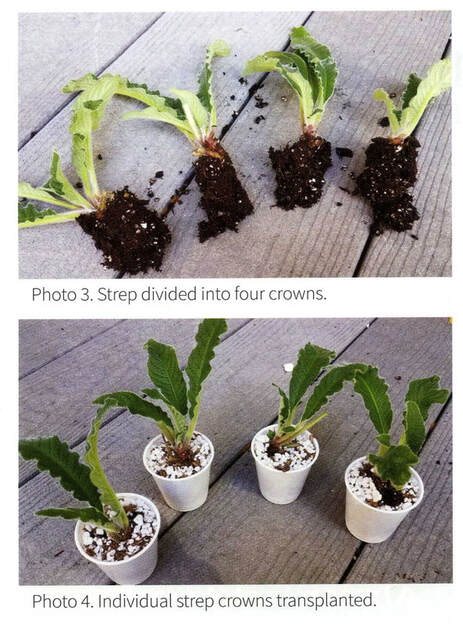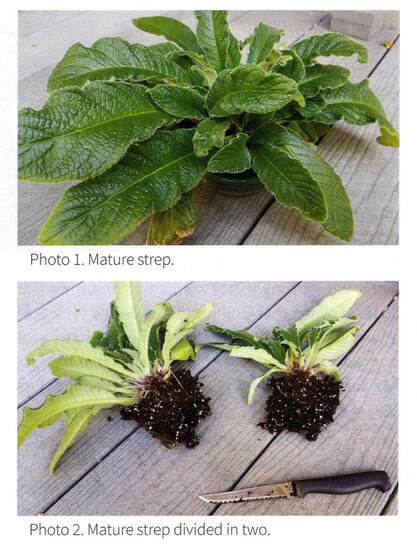Streptocarpus: Divide and Conquer
|
By Terri Vicenzi Bloomington, Indiana
First published in the African Violet Society of America magazine |
|
Streptocarpus plants are beautiful and showy members of the gesneriad family, and many hybrids grow vigorously and can become quite sizable. For growers new to Streptocarpus, it's not always clear when and how to go about dividing them. Doing so helps keep them healthy — streps can be particularly susceptible to root rot and sudden decline if not divided carefully.
|
|
Whatever container you choose to use, make sure it is small, only slightly larger than the crown itself. It is important to place the crowns slightly above the rim of the pot and above the surrounding soil line. Emerging foliage can rot if the crowns are buried too deeply in the soil (see Photos 3 and 4). Water the plants with a light hand so that the media is damp but not overly wet.
Let the Plants Recover It is important to note that in either scenario, when you divide streps, you are massively disturbing the roots. This relative of African violets is much more vulnerable to transplant shock. I recommend that divided plants recover for a week or two in a bag or under a dome, away from the bright light of a growing stand or windowsill. Gradually open the bag or dome over 3 to 4 days to acclimate the plant to ambient room conditions. If the strep wilts after removal, place it back in the bag or dome and allow additional time for the plant to recover. Once you move the streps to their growing area, continue to water carefully until the repotted plants show signs of new growth. |



